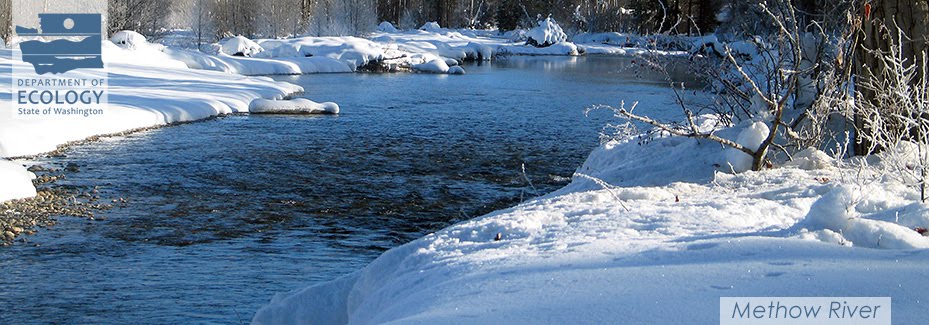(This is the second post of a three-part series on our cleanup, restoration, and preservation efforts at Port Gamble.)
The Port Gamble cleanup is a great example of how cleanups can stimulate habitat restoration and preservation efforts! Removing thousands of creosote-coated pilings and more than 100,000 yards of contaminated sediments and wood waste at the century-old mill was the hands-on part of the job, and that work was completed earlier this year. Less noticeable, but just as important as those efforts, is our ongoing restoration and preservation work in Port Gamble Bay.
Thanks to funding from the Washington State Legislature, Ecology was able to purchase land for conservation and recreation, and complete restoration and pollution control projects in the bay. We also studied contamination in fish and shellfish.
This was all possible because in 2013, we received $9 million from the legislature for “source control, habitat preservation and cleanup sustainability” for Port Gamble Bay. The projects completed with this funding have improved and protected habitat in and around the bay, created jobs in the area, and improved recreational opportunities.
With this funding, we also contributed about $4 million to purchase nearly 1,900 acres of land from Pope Resource/Olympic Property Group for permanent protection and conservation in the Port Gamble Bay watershed. This purchase protects the majority of the western portion of the bay’s uplands from future development and makes it available for current and future generations to enjoy.
We worked with Kitsap County, Pope Resources/Olympic Property Group (which owned the property), the land conservancy group Forterra, and the Port Gamble community for over four years to reach the agreement. This included:
- Contributing partial funding to purchase 535 acres to create Port Gamble Forest Heritage Park. This was a large community effort to protect 1½ miles of shoreline, tidelands, and uplands with fish-bearing streams.
- Providing full funding to Kitsap County to protect and conserve 1,355 acres of the Port Gamble Forest Block. Under a 25-year timber deed, Pope Resources will be able to harvest trees before the land is fully transferred to Kitsap County, and added to the Port Gamble Forest Heritage Park.
Our funding provides matching funds for grants and will enable additional fundraising efforts by Forterra and Kitsap County to conserve even more land.
Along with preservation, the funding is also supporting several restoration projects to compliment cleanup and improve the overall health of the bay. We worked with partners to:
- Restore two acres of eelgrass in the southern bay to support Pacific herring, fish, and crab. Eelgrass habitat is essential to fish and other marine species. Port Gamble Bay has lost a significant amount of eelgrass habitat over the past 20-30 years. This restoration effort will expand existing habitat and help inform future restoration efforts.
- Enhance nine acres of Olympia oyster habitat on the western shoreline and in the southern bay to diversify the types of shellfish in the bay, restore native species, and improve water quality. Shellfish are an important resource to the tribes, community, and visitors. This project builds on other efforts to improve shellfish resources throughout the bay.
- Replant 1½ acres of trees and shrubs at former landfills on the western shoreline in the Port Gamble Forest Heritage Park. Riparian habitat is important to upland and marine species. This effort will help create a connected, forested shoreline along about 1½ mile stretch of beautiful beach.
- Remove 296 tons or 591,600 pounds of debris from beaches and tidelands – tires, nets, derelict boats and a steel barge, and creosote-treated pilings. This effort builds on other cleanup projects occurring at the mill site. That earlier work removed pilings and associated contaminated sediment and potential sources of contamination (for example, a sunken barge with lead paint) that are harmful, hazardous, or displace desirable marine life from the bay’s beaches.
We couldn’t have done this work alone. We are so grateful to the following key contributors:
- Pope Resources/Olympic Property Group for cleanup.
- Pope Resources/Olympic Property Group, Kitsap County, the Port Gamble S’Klallam and Suquamish tribes and community organizations, such as the Kitsap Forest and Bay Coalition, for land purchases.
- Port Gamble S’Klallam Tribe for cleanup, debris and derelict piling, and vessel removal, eelgrass restoration, and Pacific herring and shellfish studies.
- Washington’s Department of Natural Resources and Department of Fish and Wildlife, the Washington Conservation Corps, Kitsap County Parks, and community groups for eelgrass restoration, riparian restoration, and Pacific herring and shellfish studies.
- Puget Sound Restoration Fund and Washington Conservation Corps for shellfish enhancement.
- Pope Resources and Kitsap Public Utility District for construction of a new wastewater treatment plan that will allow 90 acres of geoduck tracts to reopen. Pope Resources will remove an existing sewer outfall on Hood Canal by January 2019.
- The Washington State Legislature for providing funds to help restore and protect the bay.
Stayed tuned for the third installment of this three-part series.
- Part 1: Port Gamble cleanup is a great success!
- Part 3: Ongoing and future restoration, redevelopment, and recreation
By Celina Abercrombie and Cheryl Ann Bishop, Toxics Cleanup Program
s beyond map, east and south.



No comments:
Post a Comment